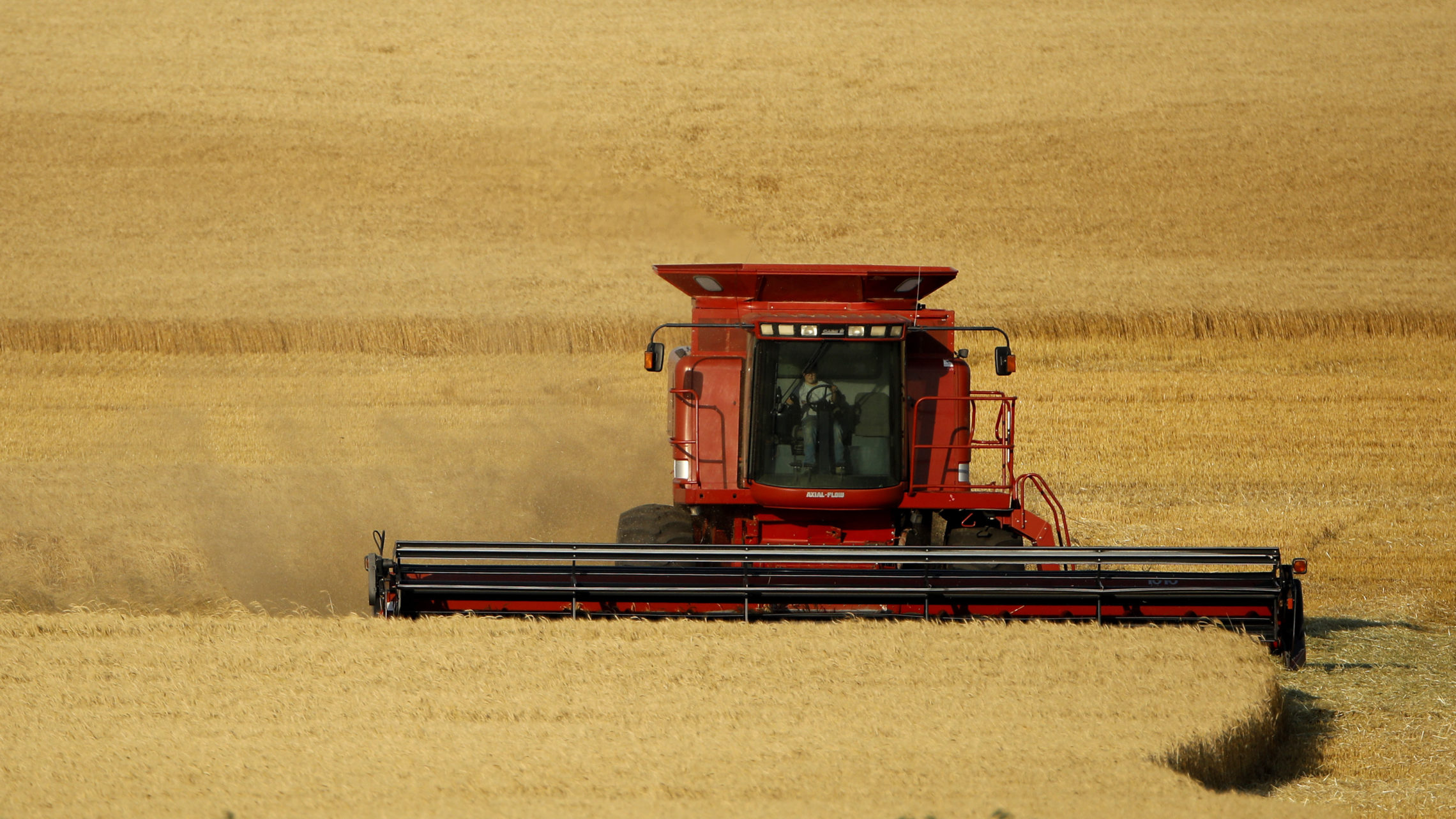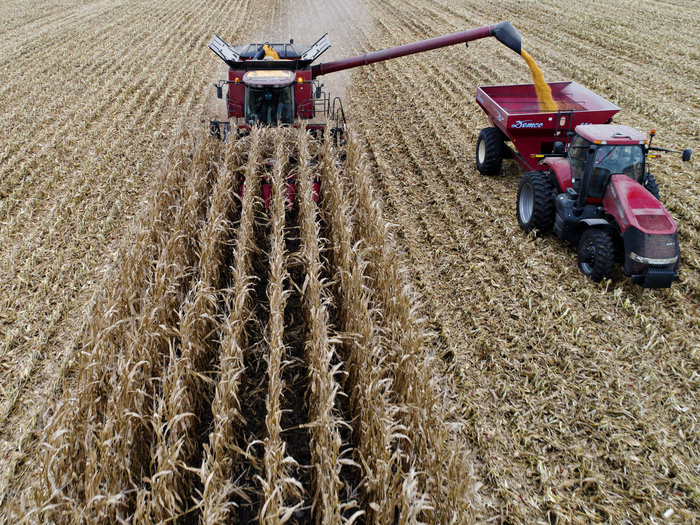
‘American Soil’ Farmland Is Increasingly Foreign Owned
Listen
BY RENEE WILDE
American soil.
Those are two words that are commonly used to stir up patriotic feelings. They are also words that can’t be be taken for granted, because today nearly 30 million acres of U.S. farmland are held by foreign investors. That number has doubled in the past two decades, which is raising alarm bells in farming communities.
When the stock market tanked during the last recession, foreign investors began buying up big swaths of U.S. farmland. And because there are no federal restrictions on the amount of land that can be foreign-owned, it’s been left up to individual states to decide on any limitations.
It’s likely that even more American land will end up in foreign hands, especially in states with no restrictions on ownership. With the median age of U.S. farmers at 55, many face retirement with no prospect of family members willing to take over. The National Young Farmers Coalition anticipates that two-thirds of the nation’s farmland will change hands in the next few decades.
“Texas is kind of a free-for-all, so they don’t have a limit on how much land can be owned,” say’s Ohio Farm Bureau’s Ty Higgins, “You look at Iowa and they restrict it — no land in Iowa is owned by a foreign entity.”
Ohio, like Texas, also has no restrictions, and nearly half a million acres of prime farmland are held by foreign-owned entities. In the northwestern corner of the state, below Toledo, companies from the Netherlands alone have purchased 64,000 acres for wind farms.
There are two counties in this region with the highest concentration of foreign-owned farmland — more than 41,000 acres each. One of those is Paulding County, where three wind farms straddle the Ohio-Indiana line.
Higgins says that this kind of consumption of farmland by foreign entities is starting to cause concern. “One of the main reasons that we’re watching this … is because once a foreign entity buys up however many acres they want, Americans might never be able to secure that land again. So, once we lose it, we may lose it for good.”
His other concern is that every acre of productive farmland that is converted over to something other than agriculture, is an acre of land that no longer produces food. That loss is felt from the state level all the way down to rural communities, where one in six Ohioans has ties to agriculture.
Angela Huffman is a 6th-generation farmer in Wyandot County, which, along with Paulding County, has over 41,000 acres of foreign-owned farmland. Her modest, two-story white farmhouse has been in her family for almost 200 years. Her grandfather was the last person to actively farm the land here. When he got out of farming due to declining markets, none of his five children wanted to take over, and the cropland is now leased.
But Huffman, a young millennial who lives here with her mother, wants to try to keep the farm going and revive her family heritage.
Walking out to the barn, a huge white Great Pyrenees dog watches over a small flock of sheep. Huffman says she’s worried about the effects of foreign land ownership on her rural community — which she describes as similar to Walmart pushing local businesses out of the market.
“Right out my back door here, Chinese-owned Smithfield Foods, the largest pork producer in the world, has recently bought out a couple grain elevators,” Huffman says, pointing across the field behind her house, “basically extracting the wealth out of the community.”
To be fair, U.S. farmers and corporations also invest in overseas agriculture, owning billions of dollars of farmland from Australia to Brazil, but the Smithfield Food buyout has really raised concerns with American farmers. As part of that 2013 sale, a Chinese company now owns 146,000 acres of prime U.S. farmland.
Back in the Huffman farmhouse, Joe Maxwell is typing on a laptop at the kitchen table. Maxwell is a fourth generation farmer from Missouri. He and Huffman are part of the Organization for Competitive Markets, an advocacy group of farmers and ranchers across the nation.
Maxwell points to the Smithfield Foods elevators across the field: “The money that those elevators used to make stayed within the community. Today the money those elevators make, will go into the pocket of someone thousands of thousands of miles away. This is going on across America.”
Maxwell is concerned that, as other states put restrictions on foreign purchases in place, Ohio in particular is being targeted. “So when they’re looking for investments in the U.S. and agriculture,” he says, “Ohio’s a great ag state and you don’t have any restrictions like other states.”
Nationwide, Canadian investors own the most farmland. In Ohio, it’s Germany, with 71,000 acres.
On the southern central part of the state, John Trimmer manages 30,000 acres of corn and soybeans for German investors. He’s been working with German families that have wanted to get into U.S. agriculture since the 1980s. “They started to buy land in Iowa and Minnesota,” Trimmer explains, “but right when they started, [Iowa and Minnesota] passed state laws which restricted foreign ownership.”
“None of them have an interest in the farm.”
Instead, the Germans turned to Ohio.
But, Trimmer says, there is a misconception about foreign owners — that they aren’t good neighbors or good stewards of the land. What he sees is a growing divide between older family members who still live on the farm, and their children who have no interest in the family business and want to cash out the land.
“The last two farms we bought here, through an owner, her and her brothers and sisters inherited it from their mother, and none of them wanted to farm. None of them have an interest in the farm.” Trimmer explains that his German clients have established a reputation in the community for letting the tenants — often aging parents or grown children — continue to live in the houses on the farms they buy.
Sellers work directly with his German clients — instead of putting the property up on the market, the sale ensures that family members can live out their lives in the family homestead, while still getting cash value for the farmland.
Copyright 2019 NPR. To see more, visit npr.org
Related Stories:
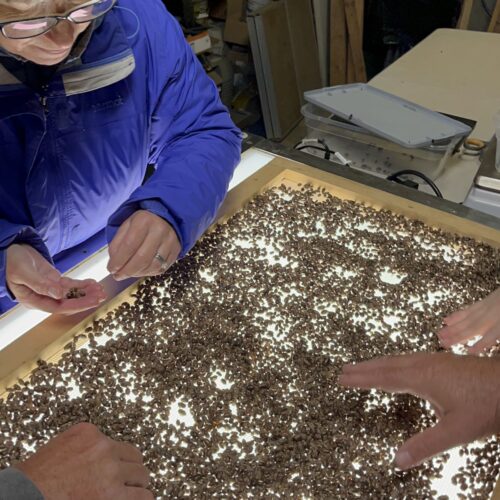
The dirty work of owning mason bees
Every October in the backyard of a Bothell home, a team of workers swarm around millions of blue orchard mason bees, to harvest the hibernating bees.
The company, Rent Mason Bees, quickly takes apart and cleans the wooden nesting blocks that gardeners and farmers across the state use in the spring to house these tiny pollinators. The company offers this service as part of its mason bee rental program.
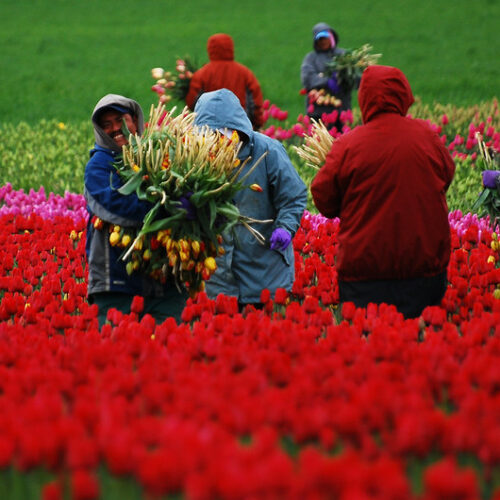
New funding to build farmworker housing in the Pacific Northwest, nationwide
The United States Department of Agriculture is soliciting applications for funding to build farmworker housing nationwide.
In the Pacific Northwest, leaders hope the money can address gaps in farmworker housing. The Pacific Northwest is in a housing crisis and that impacts rural small businesses and agricultural producers, as well as farmworkers, said Helen Price Johnson, who is the Washington State Rural Development director for the USDA.
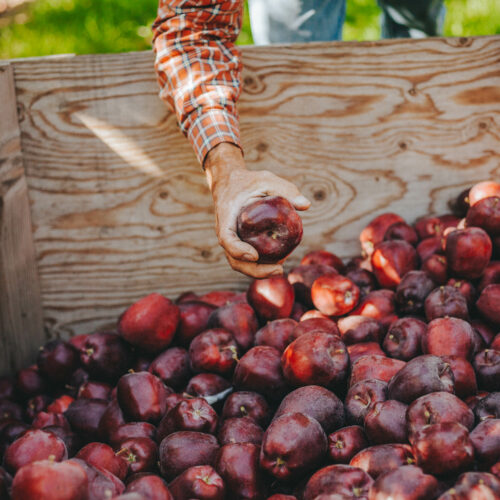
‘Vintage year’ for apple crop, experts say the weather was just right
Freshly picked red delicious apples gather in a bin. Northwest red delicious and galas are again shipping to India after tariffs were lifted. (Courtesy: Washington Apple Commission) Read Many Northwest

